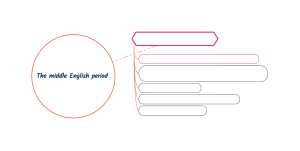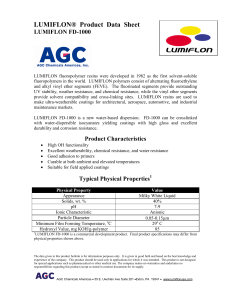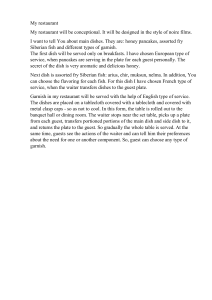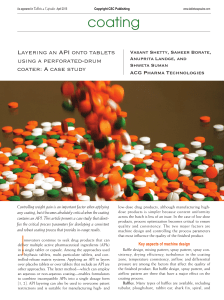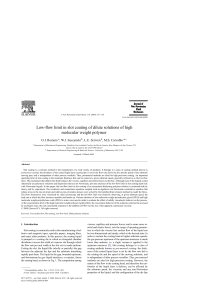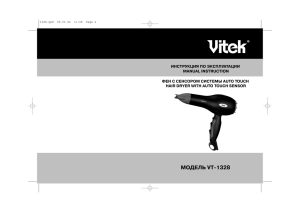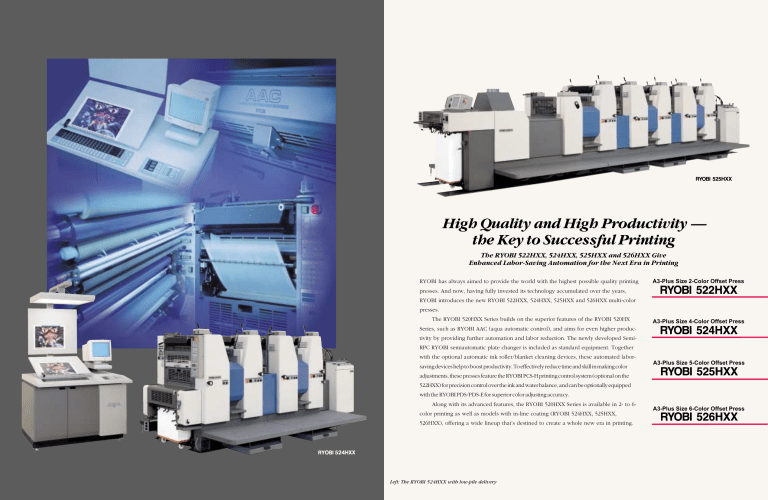
High Quality and High Productivity –– the Key to Successful Printing The RYOBI 522HXX, 524HXX, 525HXX and 526HXX Give Enhanced Labor-Saving Automation for the Next Era in Printing RYOBI has always aimed to provide the world with the highest possible quality printing A3-Plus Size 2-Color Offset Press presses. And now, having fully invested its technology accumulated over the years, RYOBI introduces the new RYOBI 522HXX, 524HXX, 525HXX and 526HXX multi-color presses. The RYOBI 520HXX Series builds on the superior features of the RYOBI 520HX A3-Plus Size 4-Color Offset Press Series, such as RYOBI AAC (aqua automatic control), and aims for even higher productivity by providing further automation and labor reduction. The newly developed SemiRPC RYOBI semiautomatic plate changer is included as standard equipment. Together with the optional automatic ink roller/blanket cleaning devices, these automated laborsaving devices help to boost productivity. To effectively reduce time and skill in making color A3-Plus Size 5-Color Offset Press adjustments, these presses feature the RYOBI PCS-H printing control system (optional on the 522HXX) for precision control over the ink and water balance, and can be optionally equipped with the RYOBI PDS/PDS-E for superior color adjusting accuracy. Along with its advanced features, the RYOBI 520HXX Series is available in 2- to 6color printing as well as models with in-line coating (RYOBI 524HXX, 525HXX, 526HXX), offering a wide lineup that’s destined to create a whole new era in printing. Left: The RYOBI 524HXX with low-pile delivery A3-Plus Size 6-Color Offset Press RYOBI’s Superb Automation Boosts Productivity Semi-RPC • RYOBI Semiautomatic Plate Changer RYOBI’s Quality Control System Makes Color Adjustments Easy System Flowchart The RYOBI semiautomatic plate changer makes plate mounting simple and easy. Mounting takes place automatically without bending the tail edge of the plate, allowing for easy reuse of the stored printing plate. This automated system can handle metal plates as well as polyesterbased plates. Ink feed volume control Ink fountain key control Ink Volume Setter Ink Volume Setter-CIP3 Image area calculating software PS data Online Plate register remote control (vertical, lateral, diagonal) PPF file Floppy disk (image area ratio data) Register • Plate Remote Control Device DEMIA The plate register remote control device quickly makes precise adjustments of the image position. This system allows the operator to make minute vertical, lateral and diagonal image position adjustments at the delivery side. Adjustments can be made in increments of 0.01 mm within a range of ±1.0 mm vertically, ±2.0 mm laterally and ±0.15 mm diagonally. RYOBI AAC automatically controls the dampening supply volume Floppy disk (image area ratio data) RYOBI PCS-H Printing Control System Spectrophotometer measures color bar of the printed sheet Transmits corrected color data RYOBI 684/685/686 equipped with RYOBI PCS-G RYOBI PDS controls a total of 6 presses (1 standard and 5 optional) RYOBI 520HXX series presses equipped with RYOBI PCS-H RYOBI PDS Printing Density Control System RYOBI semiautomatic plate changer RP740-425 AUTO • RYOBI High-Precision Register Punch (option) Plate register remote control device The RYOBI RP740-425 AUTO uses a CCD camera to scan for registration marks exposed on the plate. It then automatically adjusts the vertical, lateral and diagonal direction of the plate and punches holes in the plate to match the image position. This further assures the accuracy of the RYOBI semiautomatic plate changer. Note: The RYOBI RP520-425F High-Precision Register Punch (manual) is also available as an option. Cleaning Devices •Automatic (option) PCS-H Printing • RYOBI Control System Automatic cleaning devices are available as optional equipment to clean ink rollers and blankets. Cleaning with water after using conventional cleaning solution contributes to even more effective cleaning. This system saves time and effort involved in cleaning and changing colors, reducing the burden on the operator. The RYOBI PCS-H precisely controls the delicate balance between ink and water to realize the highest printing quality. Plus, it allows micro registration adjustments to be performed remotely, helping to shorten make-ready time prior to actual printing. Note: The automatic ink roller cleaning device is available as a set with the automatic blanket cleaning device. The automatic blanket cleaning device is also available independently as an option. The automatic ink roller/blanket cleaning devices cannot be retrofitted in the field. The automatic ink roller/blanket cleaning devices are not available on models equipped with the UV curing unit. PDS / PDS-E (option) •RYOBI Control Values for the Highest Quality Printing (optional on the 522HXX) Program Inking • RYOBI (optional on the 522HXX) RYOBI Program Inking automatically supplies ink to the ink rollers to match the image from the start of printing. After the set number of prints are finished, the ink on the rollers is automatically restored to an even state, allowing the operator to proceed quickly to the next job. The RYOBI PDS printing density control system measures the color bar of the printed sheet using sensors in a spectrophotometer. Values needed to correct color densities to match those of the OK sheet are calculated and fed back to the RYOBI PCS-H which, in turn, makes appropriate adjustments in the opening volume of the ink fountain keys. A simplified version, the RYOBI PDS-E, is also available. • Ink Volume Setter and Ink Volume Setter CIP-3 Image Area Calculating Software color adjustments by enabling the use of platemaking data. Ink Volume Setter uses PostScript data created on Macintosh*1 computers to calculate the image area ratio for each ink fountain key on a RYOBI printing press, while Ink Volume SetterCIP3 uses CIP3 PPF files created with CIP3compatible software on a PostScript RIP. The calculated data is loaded via a 3.5-inch floppy disk or through a network*2 into a RYOBI Printing Control System connected to a RYOBI printing press. The system then converts the data into the opening volume of each fountain key. *1 Macintosh is a registered trademark of Apple Computer, Inc. *2 An optional network connection kit is required. RYOBI’s original image area calculating software greatly reduces labor in making RYOBI Program Inking RYOBI RP740-425 AUTO Winner of a 1999 Good Design Award sponsored by the Japan Industrial Design Promotion Organization (JIDPO) Automatic ink roller cleaning device Automatic blanket cleaning device Note: Smart End Inking is not available on the 522HXX. Ink Volume Setter software Reliable Features Support Precision Printing Flexible Processing of a Wide Range of Printing Jobs AAC Aqua Automatic •RYOBI Control System • Stable Paper Feed and Delivery •A rotary type stream feeder ensures stable, smooth paper feeding for paper thicknesses ranging from onion skin to heavy stock. Adjustments to accommodate variations in paper quality and paper size are simple and easy. The RYOBI AAC comes as standard equipment. A high-precision aqua film sensor monitors the aqua film thickness on the plate surface and automatically controls the water fountain roller speed to maintain the optimum dampening supply volume set by the operator. Because it forms a uniform thickness without being affected by environmental conditions such as air temperature or humidity, the RYOBI AAC relieves the operator of the task of having to continually adjust the dampening supply volume during printing, thus assuring stable, consistent and reliable printing quality. •Thanks to a simple, yet precise underswing infeed system, an accurate drop-away front lay system and camclosed type sheet grippers, these presses maintain stable registration accuracy even during high-speed printing at 13,000 sheets per hour. Rotary type stream feeder Note: Sufficiently grained surface is needed on metal plates for efficient use of the RYOBI AAC system. For more information, please ask your dealer. •The suction tape feeder board can handle a wide variety of paper stocks in a wide range of thicknesses assuring consistent, stable paper feeding. Plus, setting the feeder board when changing paper sizes is simplified, thanks to the reduced number of brush and runner wheels. Ink rollers Water rollers Ink and water rollers •Mechanical and electronic doublesheet detectors and multiple sensors monitor paper travel. The source of any trouble arising in the paper flow is instantly displayed on the OK monitor, allowing the operator to take quick action to remedy the situation. •High-Quality Printing without Compromise (Control unit) Plate cylinder An aqua film sensor measures the aqua film thickness on the printing plate surface Controls the rotation speed of the water fountain roller RYOBI AAC aqua automatic control system •The RYOBI-matic continuous dampening system is incorporated in the dampening section. This system assures a uniform dampening supply on the plate surface to reproduce sharp halftone dots, glossy solids and finely detailed text. Start-up is quick and is designed to minimize wasted sheets. By simple lever operation, it can also be switched easily between integrated mode and separated mode, in order to exactly match the image and ink characteristics. Delivery section •Each ink section consists of 17 ink rollers including four different-diameter form rollers. This superior design ensures an ample ink coverage ratio over the maximum printing area. Printed sheets are reproduced beautifully thanks to superior kneading efficiency and inking characteristics, even at high printing speeds. •The decurling device uses a vacuum to eliminate curls in paper stock immediately prior to delivery. Printed sheets are delivered neat and flat. In addition, an air blower and suction wheels boost sheet piling performance when printing at high speeds. •The satellite V-shaped 5-cylinder system allows printing with the minimum number of gripper changes, maintaining registration accuracy. Suction tape feeder board • Rugged Design for Superb Durability •Quick Adjustment for a Variety of Paper Sizes To ensure stable printing quality over long periods of use, RYOBI employs its superior mechatronics technology throughout the presses’ entire design. A bearer contact cylinder system maintains constant plate pressure with each rotation of the cylinder. Plus, ultra-high precision gears are induction-hardened while all cylinders and transfer drums use high-precision bearings. Ultra-high precision gears •These presses can handle a wide range of paper sizes from a postcard size of 100 x 150 mm to a maximum size of 520 x 375 mm. They are also designed to smoothly feed envelopes and heavy stocks. Envelope printing •A convenient paper size change button allows quick and easy resetting of paper guides for different stock size. Push the button to feed just one sheet of paper and the sheet automatically stops, first at the front lay and then at the delivery section to allow paper guide setting at each section. High-Quality In-Line Coating Semi-High Pile Delivery Further Increases Productivity [RYOBI 524HXX (types 4-F/G/H), 525HXX (types 5-D/E/F), 526HXX (types 6-E/F/G)] • Superior Ease of Operation The anilox roller is independently driven by a separate motor, and adjusting the amount of varnish supply is done simply and easily from the delivery side. When the coating unit is not being used, the entire coating cylinder and anilox roller mechanism can be moved easily upward with the push of a button. Then a safety guard is inserted between the coating cylinder and the main press unit, making maintenance such as cleaning the coating cylinder and mounting blankets easy and safe during operation, enabling the operator to proceed to the next printing job. • Coating Unit The RYOBI 524HXX, 525HXX and 526HXX are equipped with an in-line coating system that can apply an aqueous or UV coating on printed material. Such protective or gloss coatings add higher value to your printing. Thanks to the system’s shortened drying time, it can be helpful especially for short-run jobs. System Capable of • Drying Handling High-Speed Operation Drying aqueous coatings is done with a system that uses a combination of heat from an infrared dryer as well as heated and ambient air knives. The infrared dryer and the air knives can be adjusted to provide optimum drying of inks and coatings, and deliver ample drying capacity even during high-speed operation. A UV curing unit can be built into the press for applications such as printing that demands quick drying times, glossy printing and printing on special films. • Spot Coating Using Nylon Plates The universal clamp does double duty by enabling the operator to mount blankets with aluminum bars as well as nylon plates (used by adhering on presensitized plates). This system is capable of doing both over-all coating or spot coating. Coating unit Delivery exhaust fan Infrared dryer Semi-high pile delivery Air suction UV curing unit Ambient air knives Delivery side operation panel Note: Except for RYOBI 522HXX/524HXX with low-pile delivery (type 4-A). •The semi-high pile delivery system can accommodate piles up to 700 mm in height, increasing delivery efficiency. Coated sheets can be stacked in the delivery so that the delivery table changing labor is reduced, while making a cleaner work environment by reducing the use of powder spray. Coating Unit Specifications Max. Coating Area Coating Cylinder Blanket Size Number of Coating Rollers 505 x 350 mm (19.88 x 13.78") 546 x 427 x 1.9 mm (21.57 x 16.81 x 0.075") 1 (anilox roller) Dryer Specifications Aqueous Coating UV Coating Infrared dryer (including heated and ambient air knives) UV curing system Note: These drying systems can also be used for normal offset printing and UV printing. Drying system (UV curing unit, ambient air knives + infrared dryer + heated air knives) Mechanical Configuration (RYOBI 525HXX type 5-F) Delivery side operation panel •The operation panel at the delivery side uses a 10-inch touch-panel color LCD. Operation is easy and straight-forward— simply touch the on-screen menu according to operating guidance provided for primary operation such as setting and inputting the number of printed sheets. In addition, the OK monitor allows the operator to check on the paper travel and the activation of safety devices. Anilox roller Air suction Heated air knives Fifth color printing unit Coating cylinder Air suction Combination Chart for RYOBI 522HXX Type Number of printing units Coating unit Low-pile delivery (430 mm) Dryer Semi-high Coating circulation device pile delivery Infrared dryer UV curing For UV (700 mm) For aqueous (heated/ambient coating coating unit air knives) Combination Chart for RYOBI 526HXX Type Mechanical side view Number of printing units Coating unit Dryer Semi-high Coating circulation device pile delivery Infrared dryer UV curing For UV (700 mm) For aqueous (heated/ambient coating unit coating air knives) Low-pile delivery (430 mm) Mechanical side view : Standard equipment —: Not available Combination Chart for RYOBI 524HXX Type Number of printing units Coating unit Low-pile delivery (430 mm) Coating circulation device Dryer Semi-high pile delivery Infrared dryer UV curing For UV (700 mm) For aqueous (heated/ambient coating unit coating air knives) Mechanical side view : Standard equipment —: Not available * * 1 : A UV roller is equipped as standard on models equipped with a UV curing unit (types 4-D/E/G/H, 5-C/E/F, 6-C/D/F/G). The UV roller can be used for normal offset printing. 2 : Aqueous and UV coating cannot be done simultaneously. Mechanical Dimensions (Units: mm) (Units: mm) (type 4-A) : Standard equipment —: Not available 4,200 (13'9") (Units: mm) (type 4-H) 1,380 (4'6") * The air cylinder compressor is standard equipment on the 1,705 (5'7") 1,700 (5'7") 6,895 (22'7") 2,330 (7'8") 522HXX and 524HXX (types 4-A/B/C/D/E). However, it is not equipped on the 524HXX (types 4-F/G/H), 525HXX and 526HXX and thus should be prepared at the customer’s side. For more information, please ask your dealer. 1,410 (4'8") RYOBI PCS-H Operation Stand Coating, Infrared Dryer/UV Curing Unit Operation Console UV Curing Unit Power Supply Box Coating, Infrared Dryer/UV Curing Unit Control Box Oil Hydraulic Pump, Heated and Ambient Air Blower Box Exhaust Blower Box Aqueous Coating Circulation Device UV Coating Circulation Device Air Cylinder Compressor * Dampening Solution Cooling/Circulation Device : Standard equipment —: Not available 1,705 (5'7") 1,700 (5'7") Mechanical side view 2,295 (7'6") Dryer Semi-high Coating circulation device pile delivery Infrared dryer UV curing For UV (700 mm) For aqueous (heated/ambient coating coating unit air knives) 1,705 (5'7") Low-pile delivery (430 mm) 600 (2') Coating unit 1,700 (5'7") Number of printing units 830 (2'9") Type 2,330 (7'8") 2,700 (8'10") Combination Chart for RYOBI 525HXX 1,410 (4'8") 2,295 (7'6") 600 (2') 1,345 (4'5") 2,225 (7'5") 600 (2') 830 (2'9") 1,380 (4'6") Specifications NP52/NPE52 NP Units for Value-Added Tasks [available as an option for the RYOBI 522HXX/524HXX (type 4-A)] RYOBI 522HXX RYOBI 524HXX RYOBI 525HXX RYOBI 526HXX 2 4 5 6 Number of Printing Units The RYOBI 522HXX and 524HXX (type 4-A) with low-pile delivery can be retrofitted with NP units in the field to accommodate various customer needs. Both NP units feature an independent NP impression cylinder to enable high-quality numbering. Plus, when only offset printing is required without any finishing operations, the NP unit can be swung away from the parent press in just a few minutes. NP52 NP Unit Specifications * 257 x 182 mm (10.12 x 7.17")* Max. Paper Size (when using NP unit) 520 x 365 mm (20.47 x 14.37") Min. Paper Size (when using NP unit) 0.04 – 0.25 mm (0.002 – 0.0098") Paper Thickness (when perforating) 0.04 – 0.15 mm (0.002 – 0.059") Max. Numbering Area Max. Nylon Plate Size Imprinting Area Min. Paper Size 100 x 150 mm (3.94 x 5.91") Max. Printing Area 505 x 350 mm (19.88 x 13.78") Paper Thickness • 0.5 mm (0.02") stock can be printed when feeding sheets perpendicular to the fiber direction. 3,000 – 13,000 S.P.H. RYOBI semiautomatic plate changer Plate Size 510 x 400 mm (20.08 x 15.75") [positioning pin pitch: 425 mm (16.73")] Plate Thickness (total) 0.3 mm (0.012") 505 x 345 mm (19.88 x 13.58") (spot color printing of numerous small images can be printed in this area) Blanket Type Blanket with aluminum bar Blanket Size 541 x 437 x 1.9 mm (21.3 x 17.2 x 0.075") Under-Blanket Size 505 x 389 x 0.6 mm (19.88 x 15.31 x 0.024") Feeding System Rotary type stream feeder Feeder Pile Capacity 550 mm (21.65") Feeder Pile System Pre-pile Delivery System Chain Delivery Delivery Pile Capacity 430 mm (16.93") Infeed System Underswing gripper and paper feed drum 8 (form rollers: 2) Delivery Pile Capacity 350 mm (13.78") * * Numbering Box (straight-type/convex-type) Total boxes (max.): 20 Vertical Perforator 5 pcs. (max.) Cross Perforator 3 pcs. (max.) Dimensions (L x W x H) 920 x 1,020 x 1,020 mm (3' x 3'4" x 3'4") Net Weight 460 kg (1,015 lbs.) The parent press specifications vary when using the NP unit. 1,380 (4'6") 1,540 (5'1") Number of Rollers Ink rollers 17 (form rollers: 4) Water rollers 4 (form roller: 1) 600 mm (23.62") Low pile : 430 mm (16.93") Semi-high pile : 700 mm (27.56") 700 mm (27.56") Gripper Margin 9 ±1 mm (0.354 ±0.039") Registration System Pull side guide, Drop-away front lay Vertical Image Micro Adjustment Range ±1.0 mm (±0.039") (plate cylinder) Vertical Image Rough Adjustment Range ±20 mm (±0.79") Lateral Image Micro Adjustment Range ±2.0 mm (±0.079") (plate cylinder) Diagonal Image Micro Adjustment Range ±0.15 mm (±0.006") (at maximum printing area) (plate cylinder) Oiling System Automatic centralized oiling system 7,440 (24'5") 2,700 x 2,225 x 1,705 mm (8'10" x 7'5" x 5'7") 4,200 x 2,295 x 1,705 mm (13'9" x 7'6" x 5'7") (4-A) 5,945 x 2,295 x 1,705 mm (19'6" x 7'6" x 5'7") (4-B/C/D/E) 6,895 x 2,295 x 1,705 mm (22'7" x 7'6" x 5'7") (4-F/G/H) 7,440 x 2,295 x 1,705 mm (24'5" x 7'6" x 5'7") (5-A/B/C/D/E/F) 7,440 x 2,295 x 1,705 mm (24'5" x 7'6" x 5'7") (6-A/B/C/D) 8,390 x 2,295 x 1,705 mm (27'6" x 7'6" x 5'7") (6-E/F/G) 3,400 kg (7,500 lbs.) Approx. 8,000 kg (17,700 lbs.) (4-A) Approx. 10,000 kg (22,046 lbs.) (4-B/C/D/E)* Approx. 12,800 kg (28,300 lbs.) (4-F/G/H) Approx. 13,300 kg (29,400 lbs.) (5-A) Approx. 15,000 kg (33,000 lbs.) (5-B/C/D/E/F) Approx. 13,400 kg (29,600 lbs.) (6-A) Approx. 15,000 kg (33,000 lbs.) (6-B/C/D) Approx. 17,400 kg (38,400 lbs.) (6-E/F/G) 53A 63A 68A 90A (4-C) 80A (4-D) 170A (4-E) 105A (4-F) 95A (4-G) 185A (4-H) 90A (5-B) 80A (5-C) 105A (5-D) 95A (5-E) 185A (5-F) 90A (6-B) 80A (6-C) 170A (6-D) 105A (6-E) 95A (6-F) 185A (6-G) 14 kW 16 kW 17 kW 32 kW (4-C) 28 kW (4-D) 59 kW (4-E) 37 kW (4-F) 33 kW (4-G) 65 kW (4-H) 32 kW (5-B) 28 kW (5-C) 37 kW (5-D) 33 kW (5-E) 65 kW (5-F) 32 kW (6-B) 28 kW (6-C) 59 kW (6-D) 37 kW (6-E) 33 kW (6-F) 65 kW (6-G) 1,705 (5'7") Dimensions (L x W x H) 1,700 (5'7") 0.04 – 0.4 (0.5) mm [0.0016 – 0.016 (0.02)"] Plate Loading System (Units: mm) 2,330 (7'8") • The postcard feeding kit (standard) must be mounted. 90 x 120 mm (3.54 x 4.72") (for one spot color printing) Number of Ink Rollers 2,295 (7'6") 520 x 375 mm (20.47 x 14.76") 505 x 345 mm (19.88 x 13.58") Mechanical Dimensions 600 (2') Max. Paper Size • The local conditions, ink, stock and printing plate types, and printing quality required will affect the maximum printing speed. • The maximum printing speed is 8,000 S.P.H. when printing postcards. 3,000 – 8,000 S.P.H. (type 5-F) RYOBI-matic Continuous Dampening System Printing Speed Printing Speed (when using NP unit) * 830 (2'9") * * Paper Thickness (when numbering) Dampening System * Weight (Units: mm) (type 6-G) * 1,380 (4'6") 1,540 (5'1") 2,295 (7'6") 600 (2') 830 (2'9") Power Source 1,705 (5'7") 1,700 (5'7") 2,330 (7'8") 8,390 (27'6") Press ––– 27A Coating unit and dryer Press Power Consumption Coating unit and dryer * * * * 3 phase 200V 50/60Hz Coating unit and dryer Press Electric Current * ––– 7.5 kW *Including peripheral devices of the press. ––– 3 phase 200V 50/60Hz
